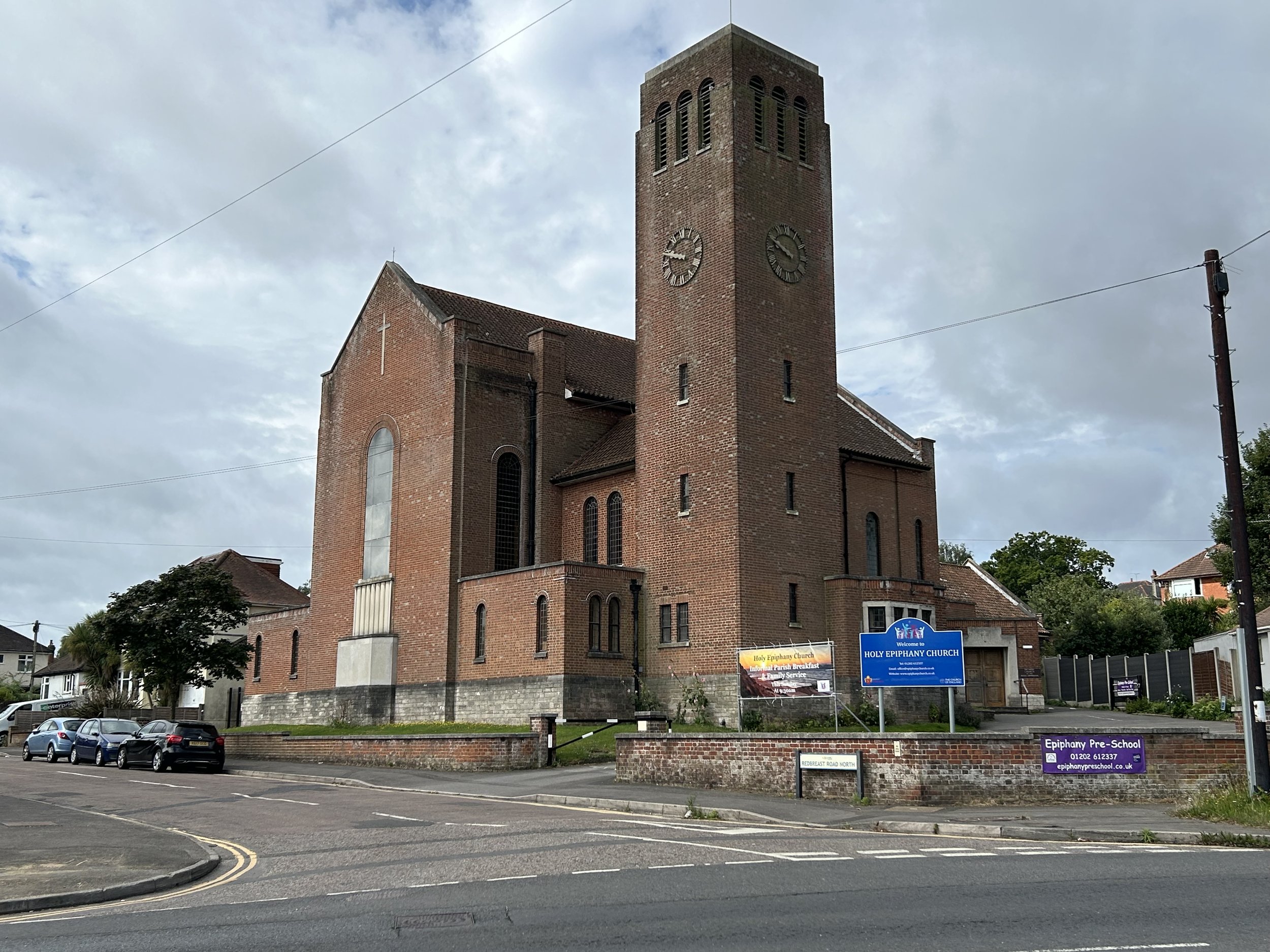
The history of the
Holy Epiphany Church
The Church History
Following the partial destruction of Holy Rood Church in Southampton during World War II, it was decided by Winchester Diocese that instead of rebuilding it, Holy Epiphany Church would be built in Bournemouth. An original stone from Holy Rood church dated 1671 is built into the wall at the back of our church.
The Epiphany Window
The Rose Window
At the opposite end of the church is the circular ‘Rose’ patterned stained glass window. It depicts the four corners of the cross extending outwards to all points of the compass: North, South, East, and West, representing the all-encompassing reach of Christ.
The Church of the Holy Epiphany was built in 1953 and is dedicated to the wise men who journeyed from the east to visit the infant Jesus.
Come inside to appreciate the brightly coloured east window showing this familiar scene, and take time to ‘worship the Lord in the beauty of holiness.’
Specification:
SWELL – 8′ Oboe, 8′ Cornopean, 4′ Flute, 4′ Principal, 8′ Vox Humana, 8′ Saliconal, 8′ Diapason, 16′ Bourdon, Tremulant, Octave Coupler, Swell-to-Great Coupler, Swell-to-Pedal Coupler, Balanced Swell-Pedal.
GREAT – 8′ Trumpet, 8′ Clarinet, 2′ Fifteenth, 2-Rank Mixture, 4′ Flute, Quint, 4′ Principal, 8′ Stopped Diapason, 8′ Open Diapason, 16′ Bourdon, Great-to-Pedal Coupler.
PEDAL – 16′ Bourdon, 16′ Sub-bass, 16′ Bass
PISTONS – Six Mechanical foot pistons, 3 on Swell and 3 on Great
The Church Organ
Holy Epiphany Church has a two-manual organ, housed in a recess four metres above the north choirstalls. The organ is a wonderful instrument and it has a fine, rich tone. It has 21 ranks of pipes. The action is electro-pneumatic, and the stop action is mechanical.
It was built in 1879 by Harrison and Harrison and installed in St Mary Magdalene Church in Dundee. Henry Willis and Co moved the entire instrument, virtually unchanged, to this church in 1954.





